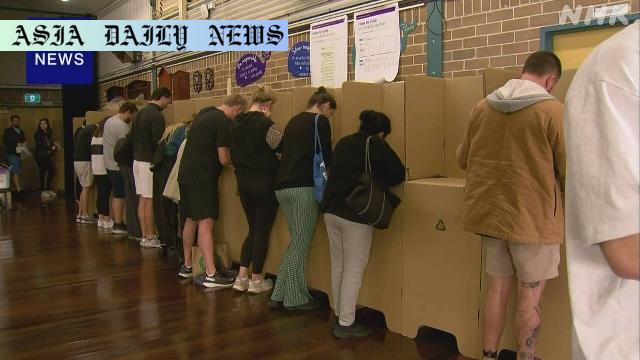Election: Australians are casting their votes to determine if the ruling Labor Party retains its majority in the House of Representatives.
Australians head to polls in a significant general election.
Labor aims to maintain its majority in the 150-seat chamber.
Major issues include inflation, housing costs, and foreign policy.
Growing sentiment against Trump-like policies affects the opposition.
Vote counting begins immediately after polls close at 6 p.m.

Overview of Australia’s General Election
The Australian general election is a crucial event, with millions heading to the polls to determine the nation’s political future. Voters are deciding whether the current Labor Party, led by Prime Minister Anthony Albanese, can retain its majority in the 150-seat House of Representatives. The opposition, spearheaded by the conservative coalition and its leading party, the Liberals, aims to shift the balance of power. This election not only reflects domestic concerns such as inflation and housing affordability but also carries broader geopolitical implications.
The Stakes in Leadership
For Labor, maintaining power would solidify their ability to continue their domestic and international policies. Racing against time, the party hopes to address pressing challenges like inflation, which has fueled anxiety among voters. A key focus is on stabilizing housing costs, a growing concern in urban populations. While Labor has demonstrated efforts in this direction, the election may be seen as a referendum on its ability to deliver tangible results in these areas. Conversely, the conservative coalition is positioning itself as a viable alternative, emphasizing efficiency in governance but facing criticism associated with Trump-adjacent policies.
Public Sentiment and Key Issues
Australian sentiment towards policy, including international relations, appears to lean against Trump-era influences, a trend that disadvantages the conservative camp. Rising public resentment concerning US tariffs and trade policies has had a ripple effect, influencing voter attitudes toward local parties. Additionally, younger voters are showing a strong interest in progressive matters such as environmental sustainability and inclusivity on the world stage.
Polling and Predictions
Polls suggest a narrow advantage for Labor, with a predicted 52.5% approval rate compared to the coalition’s 47.5%. However, close contests have shifted unexpectedly in Australia’s past elections. Thus, while predictions offer a glimpse of possibilities, the final outcome will depend on various demographic and turnout factors. Students and urban dwellers, for instance, are expected to play pivotal roles in determining party leadership, driven by concerns like climate action and housing reforms.
Conclusion
As polls close at 6 p.m. local time, vote counting will immediately commence, with millions awaiting the verdict of this high-stakes event. Regardless of which party emerges victorious, the challenges outlined during this election cycle signify a critical period for Australia’s governance. With inflation, housing, and global relations on the ballot, the elected leadership will be under immense pressure to deliver impactful solutions.
Commentary
Importance of the Australian Election
The Australian general election is a testament to the nation’s vibrant democracy, enabling citizens to influence their collective future. In this instance, voters face the dual challenge of choosing sound leadership while tackling pressing issues like inflation and the housing crisis. The significance of this election lies in its ability to shape public policies for years to come, especially as global dynamics increasingly demand collaborative international strategies. Both domestic priorities and a need for proactive global engagement are at the forefront of considerations.
Labor vs. The Conservative Coalition
This election also underscores an ideological battle between Australia’s major political actors. Labor, under the leadership of Anthony Albanese, seems to project stability and progressiveness, whereas the conservative coalition aims to reinstate its influence through promises of governmental efficiency. With recent memories of the Labor Party’s majority return after nearly a decade, there’s a sense of accountability that the party must uphold its promises. Meanwhile, the coalition faces difficulties in dissociating from unfavorable perceptions linked to US-inspired policymaking.
A Changing Electoral Landscape
One particularly fascinating aspect of this election cycle is the heightened involvement and awareness among younger voters. Students and young professionals are voicing concerns, particularly about environmental challenges and inclusion. Their growing influence in shaping the political narrative speaks of a brighter, more inclusive democratic environment. However, this also places significant pressure on leaders to prioritize actions over rhetoric, ensuring tangible improvements.
Anticipation and Outcome
As polling stations close and votes are counted, anticipation will undoubtedly rise across Australia. This democratic exercise is not merely a power shift; it reflects the ambitions and anxieties of Australians. Whether Labor retains its grip or the coalition claims victory, the necessity to address inflation, housing-cost hikes, and international image management must remain uncompromised. This election serves as a reminder of the transformative potential inherent in free, fair, and informed electoral processes.


